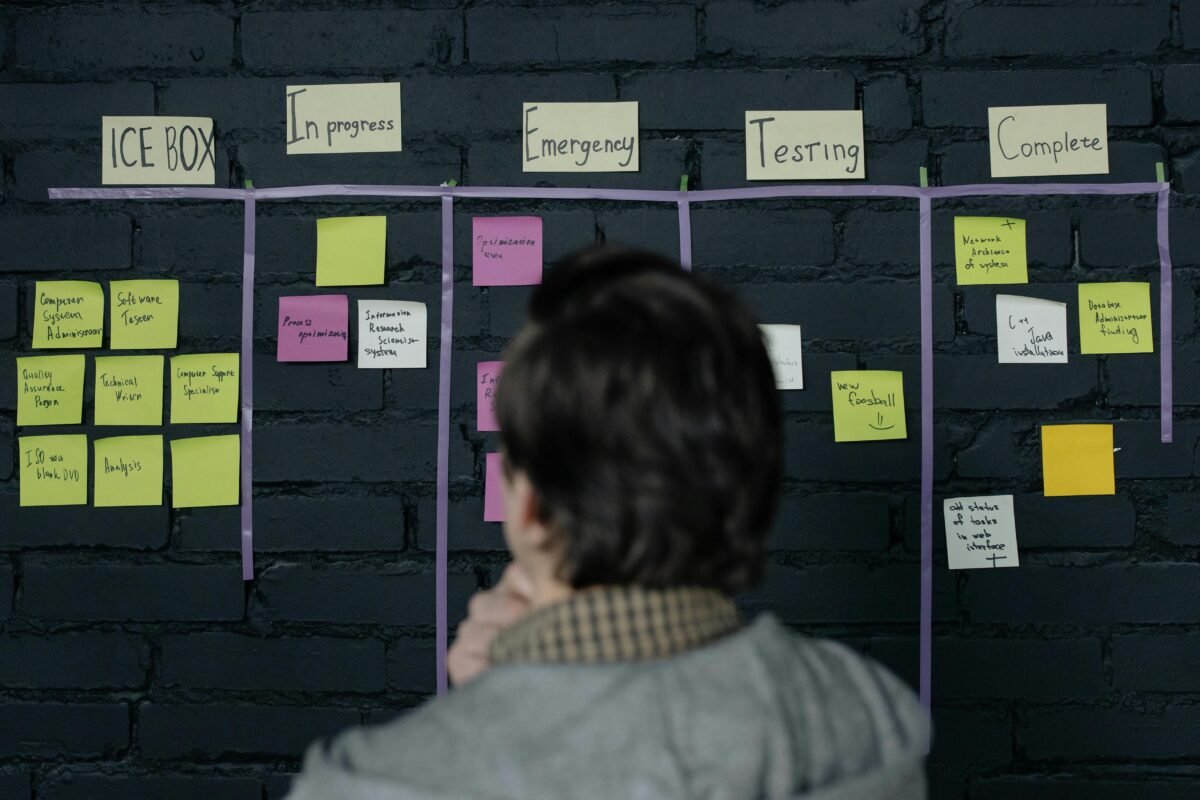Dive into the world of Agile project management and discover how this dynamic methodology can transform your projects. Learn about Agile principles, best practices, and FAQs.

Table of Contents
Introduction
In today’s fast-paced business environment, traditional project management methodologies often fall short in meeting the demands of ever-changing requirements and tight deadlines. This is where Agile project management shines. Agile is not just a methodology; it’s a mindset that emphasizes flexibility, collaboration, and continuous improvement.
Agile project management: Navigating the Dynamic Landscape

Agile project management, often referred to simply as Agile, is an iterative approach to managing projects that prioritizes adaptability and responsiveness to change. Unlike traditional project management methodologies, which follow a linear and rigid process, Agile embraces uncertainty and encourages frequent inspection and adaptation.
Agile methodologies, such as Scrum, Kanban, and Lean, share common principles and values that guide their implementation. These principles include customer collaboration, responding to change, and delivering working solutions incrementally.
Understanding Agile Manifesto and its Core Values
At the heart of Agile project management lies the Agile Manifesto, a foundational document that outlines four core values:
- Individuals and interactions over processes and tools: Agile prioritizes people and their interactions over rigid processes and tools. This fosters a collaborative environment where team members can communicate openly and adapt to changing circumstances.
- Working software over comprehensive documentation: Agile focuses on delivering tangible results to customers quickly and frequently. By prioritizing working software over exhaustive documentation, Agile teams can gather feedback early and make necessary adjustments.
- Customer collaboration over contract negotiation: Agile emphasizes the importance of involving customers throughout the development process. By collaborating closely with customers, teams can ensure that the final product meets their needs and expectations.
- Responding to change over following a plan: Agile embraces change as a natural part of the development process. Instead of adhering to a rigid plan, Agile teams welcome change and adjust their approach based on new information and feedback.
Implementing Agile Methodologies: Scrum, Kanban, and Lean

Agile methodologies provide flexible frameworks for implementing Agile principles in practice. Some of the most popular Agile methodologies include:
- Scrum: Scrum is a lightweight framework that emphasizes collaboration, transparency, and continuous improvement. Scrum teams work in short iterations called sprints, during which they deliver potentially shippable increments of product.
- Kanban: Kanban is a visual management tool that helps teams visualize their workflow and optimize their processes. Kanban boards, which typically consist of columns representing different stages of work, enable teams to track progress and identify bottlenecks.
- Lean: Lean principles, derived from the Toyota Production System, focus on maximizing value and minimizing waste. Lean methodologies emphasize continuous improvement, respect for people, and relentless elimination of non-value-added activities.
Benefits of Agile Project Management

- Enhanced Flexibility: Agile allows teams to adapt to changing requirements and priorities quickly, enabling them to deliver value to customers faster.
- Improved Collaboration: Agile fosters a culture of collaboration and communication, empowering team members to work together towards a common goal.
- Increased Transparency: Agile methodologies promote transparency and visibility, making it easier for stakeholders to track progress and provide feedback.
- Better Quality: By delivering working solutions incrementally and frequently, Agile teams can identify and address issues early, resulting in higher-quality products.
Challenges of Agile Project Management

- Managing Scope Creep: Agile’s focus on flexibility can sometimes lead to scope creep, where project requirements expand beyond the original scope.
- Resource Allocation: Agile requires a dedicated and cross-functional team, which can be challenging to assemble and maintain, especially in larger organizations.
- Cultural Resistance: Adopting Agile requires a cultural shift within an organization, which can meet resistance from employees accustomed to traditional ways of working.
FAQs (Frequently Asked Questions)
- What is the role of the Product Owner in Agile project management? The Product Owner is responsible for representing the interests of the stakeholders and ensuring that the team delivers value to the customer. They prioritize the backlog, communicate requirements, and make decisions about the product.
- How does Agile project management differ from Waterfall? Unlike Waterfall, which follows a sequential and linear approach to project management, Agile is iterative and incremental. Agile focuses on delivering value early and often, whereas Waterfall emphasizes comprehensive planning and documentation.
- What are the key ceremonies in Scrum? Scrum ceremonies include Sprint Planning, Daily Standups, Sprint Review, and Sprint Retrospective. These ceremonies help teams plan their work, track progress, and reflect on their process to improve continuously.
- How does Agile handle risk management? Agile encourages a proactive approach to risk management, where risks are identified early and addressed collaboratively by the team. Agile teams prioritize risks based on their impact and likelihood and implement mitigation strategies throughout the project.
- Can Agile be used in non-software development projects? Yes, Agile principles can be applied to a wide range of projects beyond software development, including marketing campaigns, product launches, and organizational change initiatives. The key is to adapt Agile practices to suit the unique needs of each project.
- What is the role of the Scrum Master in Agile project management? The Scrum Master is responsible for facilitating the Scrum process and ensuring that the team adheres to Agile principles and practices. They coach the team, remove impediments, and foster a culture of continuous improvement.
Conclusion
Agile project management offers a flexible and collaborative approach to managing projects in today’s fast-paced business environment. By embracing Agile principles and methodologies, teams can adapt to change, deliver value to customers, and drive innovation. While Agile is not without its challenges, the benefits far outweigh the drawbacks, making it a preferred choice for modern project teams.
Bold Custom Message:
If you are using ChatGPT 4.0 then Use this Fully SEO Optimize GPT for Better Results:
https://chat.openai.com/g/g-ySbhcRtru-fully-seo-optimized-article-including-faq-s
Write 100% Human Content and Bypass AI Detection (Guaranteed Results):
https://writehuman.ai/?via=muhammad
Looking for a custom GPT? or SEO services for your website? Hire me on Fiverr












